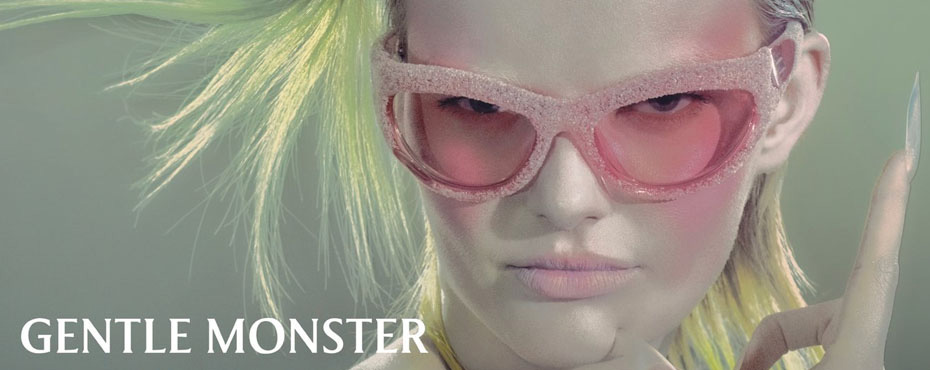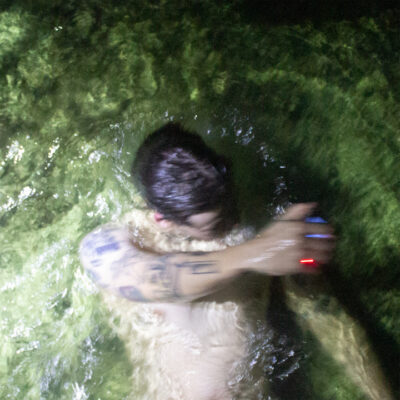Jasmine Azarian

Jasmine Azarian is a multidisciplinary artist whose creative journey began in the underground electronic music scene. As founder of the influential collective and label MOTZ, she carved out a reputation for raw, emotive techno that led to her debut solo EP Egalitarian on JoeFarr’s UX imprint, a collaboration with VTSS on To Whom All Lovers, and performances across some of Europe’s most respected clubs and festivals. With an unmistakable intensity both behind the decks and in the studio, Jasmine quickly became a distinctive voice in the global techno community.


A sudden health setback shifted her path, leading her to pursue the visual arts with the same uncompromising vision. Her paintings and conceptual works, often exploring intimacy, distortion, and memory, have already gained international recognition—ranging from exhibitions at the Louvre in Paris to solo shows, fashion collaborations, and showcases in Berlin, London, and New York. Drawing from her background in music, design, and fashion, Jasmine brings a unique multidisciplinary approach that blends minimalism with a darker sense of humor, creating art that is both deeply personal and universally resonant.
Today, she continues to evolve her practice, bridging sound, visual art, and contemporary culture, while positioning herself as one of the most exciting emerging voices at the intersection of underground music and modern art.

Instagram/Soundcloud
Hey Jasmine, so happy to have you here! How have you been these days? Could you introduce yourself to our community?
Very happy to be here! I’m really good, been bouncing around Europe with various stuff in the works. Some of you might recognise me as a former DJ/producer, but for the past 3 years I’ve been forging a career in the art world as an artist.
We had the pleasure of hosting you at one of our events in Berlin. What are your thoughts on the city? You have a personal history with it—could you tell us more?

Yeah it was super cool to participate in your Berlin Fashion week event thanks for inviting me to exhibit my work at it. Also had a lot of nice feedback on this painting. Especially the back of it haha.
Me and Berlin go way back. I visited in November 2015 for the first time and stayed in the generator hostel in Landsberger Allee. I didn’t really understand the hype of the city at first, I also got rejected from Berghain and cried because I felt I knew techno better than others who got in, I was also drunk :)) At the time I was studying music production in Uni and at the early stages of my dj journey. Little did I know I would end throwing 2 pretty big parties in the generator so it was full circle moment.

But after another 2 times coming back I started to understand the city better and saw the real magic of Berlin. Eventually I ended up moving there. I’ve ended up on some of my biggest adventures of my life there, I created my collective and I owe a lot of my DJ success to this city. Berlin will always have a special place in my heart. I really fell in love with it.
However, it is a very intense city, relationships, parties, people and even the bureaucracy. Not everyone is cut out for it and I’ve seen it chew up and spit people back out. I think it’s important to be grounded there; luckily, I had a strong sense of purpose and friendships. It’s easy to get lost there. I still enjoy going back there. It’s just a shame about the political climate there at the moment. Berlin is a city that’s meant to embrace love and freedom but I’ve seen a lot of messed-up videos. It’s sad to see because it’s such a great city for artists.
You’ve exhibited across Europe—how has showing your work in different cities influenced your artistic voice and your connection to the audience? Including your exhibition at the Parisian Louvre, how would you describe the evolution of your artistic career?
It’s still an evolution in progress. To be honest, my DJ path was much more straightforward and intuitive. The art world is hard. I have always been good at art, but when I was younger, I was a bit more of an adrenaline junkie so djing appealed to me more, but since my health issues, it made sense to give art a go. I always wanted to be a visual artist someday but due to my health that timeline got moved forward.
I thought it would be much easier if I were totally honest. I really admire artists; I think they are incredibly self-aware and they have dug deep into themselves to find their voice and create a style. Having a style is something I’ve struggled with over the past few years, and I think it’s crucial to have some sort of a style/aesthetic as an artist.

I think I’ve finally found my artistic voice, but that needs to be fine-tuned. I love storytelling and I think that I can make my work resonate with others. There are no shortcuts and making it as an artist itself is very difficult; it’s not a linear path like djing, you can really get lost or overwhelmed. Luckily, I’ve had some great opportunities like showing my work in the Louvre, doing exhibitions in Paris, London and Berlin. New York is my next stop, I love the energy of this city and it’s the best place in the world for art in my opinion.
There’s a strong emotional universality in your work. How do you balance personal storytelling with wider human themes?
I want people to be able to relate to my work even in a subconscious way to provoke some sort of feeling. Life can be messy at the best of times and we all have our vices to deal with. I explore human vulnerability with a humorous side to it. I want my work to be real, no matter how perfect we may see it, we are almost certainly different people behind closed doors. Some of my work is influenced by real life and I have a strong interest in psychology and storytelling so I’m glad that’s conveyed in my work.
How do you hope people feel when they experience your art—especially those who have gone through life struggles or found themselves on a different path because of them?


I hope people feel seen and understood when they experience my art, especially those who’ve faced life’s twists and turns or found themselves on a path they didn’t expect. I want my work to remind them that they’re not alone in their experiences, and that even in hardship there can be moments of humor, beauty, and connection. If it can offer a sense of comfort, spark self-reflection, or even just provide a small release through laughter or recognition, then I feel I’ve succeeded. Ultimately, I want my art to be a space where people can acknowledge the messiness of life without shame, and maybe even see strength in their own vulnerability.
Coming from an interdisciplinary background in sound, design, and fashion, how do those other mediums influence your visual art?
I guess I use a lot of dark colours and techno is quite a dark genre. Funnily enough, I’m not very comfortable wearing a lot of colour, I wear the same colours I paint. Mostly black, white, nudes, and dashes of colour like red or blue. I’ve never been very comfortable with colour, wearing it or painting it. So I think my style across all disciplines does have some universal theme.
Do you see a common thread running through all your creative practices, or does each one allow you to express a different side of yourself? What is your usual workflow when it comes to the creative process?
I think there’s definitely a common thread that runs through all my creative practices, a focus on storytelling and connection. Whether I’m working visually, verbally, or in a more abstract medium, I’m always trying to evoke a feeling, convey a narrative, or spark curiosity. That thread keeps my work grounded, even when the style or medium changes.

At the same time, each practice gives me a different lens to express myself. Some media let me explore precision and structure, while others give me room for spontaneity and play. That balance keeps me engaged and prevents creative burnout.
As for my workflow, I usually start with an image, a phrase, a concept and then I gather inspiration, references, or materials around it. From there, I move into a loose sketch or rough draft stage, which is where most of the experimentation happens. Once the core idea feels right, I shift into refining and polishing, making sure every detail supports the original vision. I also like to step away and revisit the work with fresh eyes before finalizing it.
You mentioned the versatility of your pieces in how they can be displayed in any direction. How does that reflect your views on perception and meaning in art? How do you perceive the message you aim to convey?
The fact that my pieces can be displayed in any direction speaks to my belief that perception is fluid and meaning is often shaped by the viewer’s perspective. I like the idea that there’s no single “correct” way to experience a work of art that meaning can shift depending on how you choose to approach it.
For me, the message I aim to convey is less about a fixed statement and more about creating an open space for interpretation. I want viewers to feel invited to engage with the work on their own terms, to discover details that resonate with them personally, and to find new meaning each time they look at it. In that way, the work becomes a conversation between artist and audience, rather than a monologue.
What’s the future for Jasmine Azarian ?

I have a collaboration with a friend in London. So we will be doing a joint exhibition, which will be really cool! Also, I know I’ve been a bit quiet this year on socials. But I’m currently working on the biggest project of my life. It’s been amazing working on it and I’ve gotten into a state of flow. Which is always a good indication for my artistic output.
I’m currently in the final stages of it. Hopefully, the fruits of my labour will see the light of day sometime next year. I’m really excited for this one. I think it will definitely push outside of my comfort zone but could end up being my most important body of work 🙂
Follow Jasmine Azarian here.
Photos KEYI Studio here.
Our next event Happening Here Gallery – ADE – AMSTERDAM 23.10.25 – free event RSVP here







